1.1 Competitive Markets: Demand and Supply
1/17
There's no tags or description
Looks like no tags are added yet.
Name | Mastery | Learn | Test | Matching | Spaced |
|---|
No study sessions yet.
18 Terms
Market
Arrangement allowing buyers and sellers to come together and make an exchange
Competitive market
Market where price of good, service, or factor of production is determined by interactions between small buyers and sellers
No one entity can set price due to this
Demand
Quantity of a good that buyers (consumers) are willing and able to buy at various prices over a time period
Individual demand is demand of single buyer
Market demand is demand of all buyers in market
Law of demand
Law stating demand curve shows negative relationship between price and quantity of good demanded
Law of demand illustrated by demand curve, which is downwards sloping

Why demand curve is downwards sloping
Consumer derive marginal benefit from consuming one unit of goods and services
Marginal benefit decreases with units of good consumed, thus consumers will only buy more goods if price falls
Movement along demand curve vs Shift of demand curve
Movement along demand curve can only be caused by change in price of a good
Shift of demand curve can only be caused by change in non-price determinant of demand
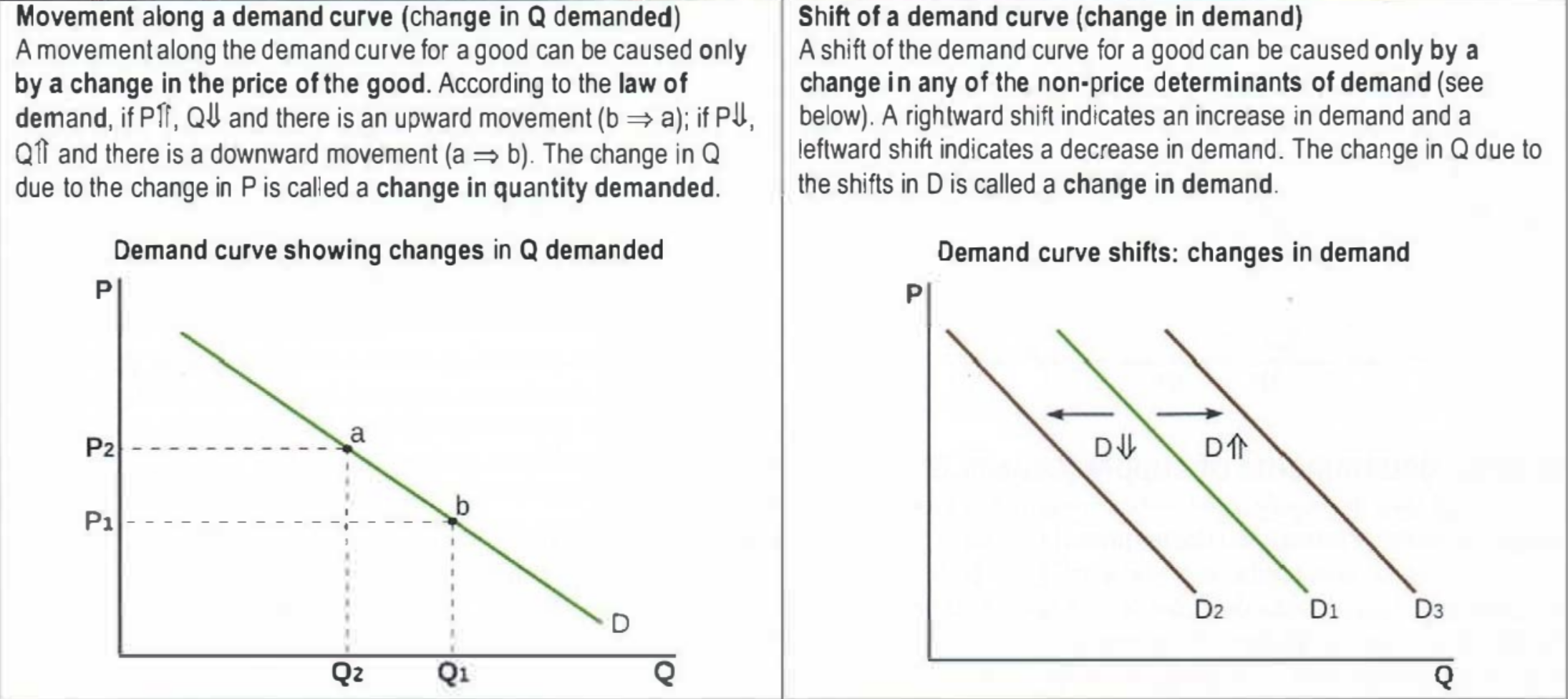
Non-price determinants of demand
Changes in consumer preferences -
Demand increases when tastes change in favor of a good
Changes in number of buyers -
Demand increases with no. of buyers in markets
Changes in income -
Demand increases with income for normal goods
Demand decreases with increase in income for inferior goods
Changes in prices of related goods -
Demand decreases with increase in demand for substitutes
Demand increases demand for complementary goods
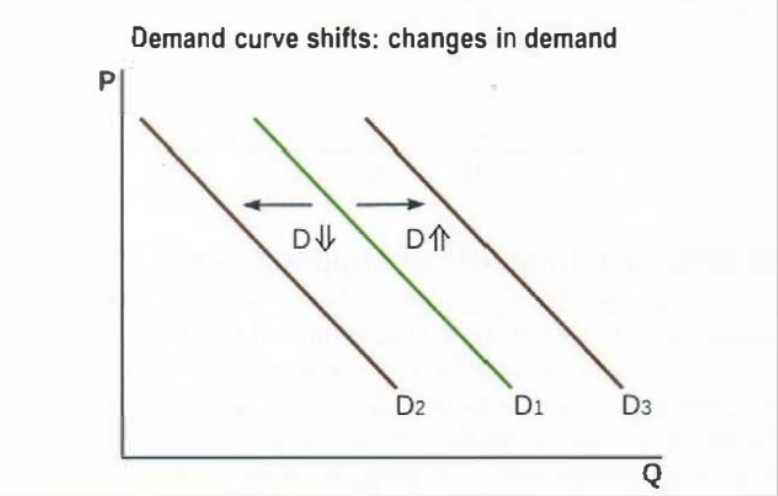
Supply
Quantity of good that sellers are willing and able to produce and sell at various prices over a time period
Individual supply is supply of single seller
Market supply is supply of all sellers in market
Law of supply
Law stating supply curve has positive relationship between price and quantity of good supplied
Law of supply illustrated by supply curve, which is upwards sloping
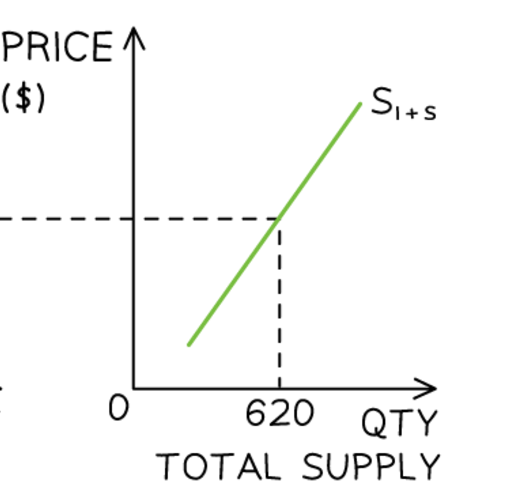
Why supply curve is upwards sloping
As price of good increases, revenue increases, and production of good becomes more profitable
Reason for higher profitability is that firms are better able to cover costs of production with higher revenue
Movement along supply curve vs Shift of supply curve
Movement along supply curve can only be caused by change in price of a good
Shift of supply curve can only be caused by change in non-price determinant of supply
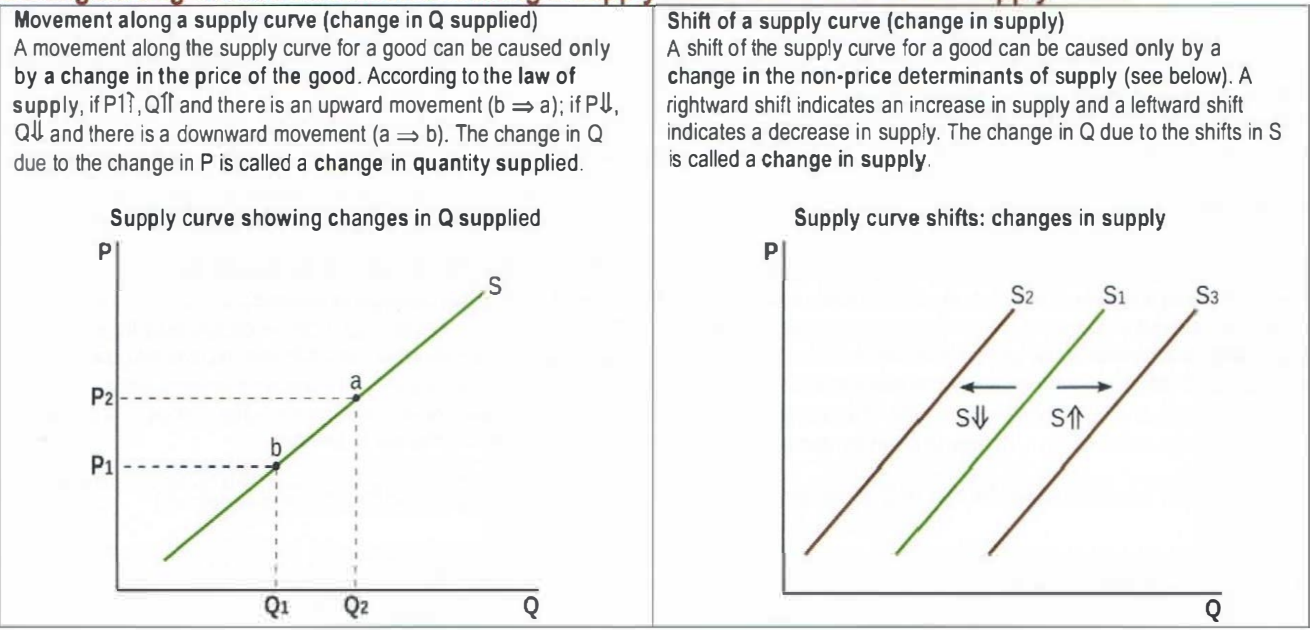
Non-price determinants of supply
Changes in costs of production -
Supply increases when cost of factors of production decrease
Changes in indirect tax -
Supply increases when indirect tax is decreased
Changes in number of firms in market -
Supply increases with number of firms in market
Changes in subsidy -
Supply increases if subsidy for product increases
Technological changes -
Supply increases with technological improvements
Changes in expectations -
Supply increases if firms expect future price will decrease
Changes in prices of related goods -
Supply for a good increases when it is in joint supply with another good whose supply increases
Supply for a good increases when it is in competitive supply with another good whose supply decreases
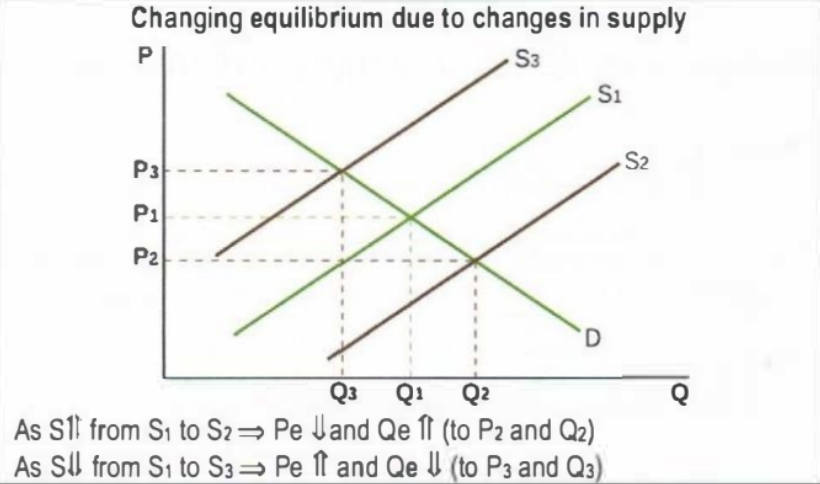
Market equilibrium
Position of balance between demand and supply where Qd = Qs
If P > Pe then excess supply (surplus)
If P < Pe then excess demand (shortage)
Equilibrium will always be achieved in free, competitive market.

When do changes in equilibrium occur?
Only changes when there is shift in demand or supply due to non-price determinant

Price mechanism
Prices determined in markets play a crucial role in allocating resources to the production of specific goods
Price signals the presence of shortage or surplus (excess demand/supply) to producers and consumers
Price also incentivizes producers and consumers to increase or decrease production and consumption respectively
This signalling/incentive function results in equilibrium being restored due to pressure along the demand and supply curves

Consumer surplus
Producer surplus
Social surplus
Benefit received by consumer buying good at lower price than they are willing to pay
Benefit received by producer selling good at higher price than they are willing to receive
Sum of producer and social surplus
In free competitive market, all 3 are maximum

Allocative efficiency
Best allocation of resources from society’s point of view, resulting in no externalities
Marginal benefit
Marginal cost
Extra benefit to consumer from consuming one more unit of a good
Extra cost to producer from producing one more unit of a good